
Spiritual Harmony in Alleppey :
Explore its Famous Mosques and Churches
Venezia Cruises

Spiritual Harmony in Alleppey :
Explore its Famous Mosques and Churches
Welcome to Alleppey, Kerala’s own Venice, where the waters mirror a rich tapestry of religious heritage. As you traverse through this vibrant cultural hub, you’ll encounter splendid mosques and churches, each narrating tales of spiritual harmony and architectural grandeur. Exploring these sacred sites offers more than just a glimpse into the intricate designs and ceremonies; it fosters a deeper cultural understanding and unity among visitors. Join us as we delve into the heart of Alleppey’s religious tourism, celebrating the diversity that binds the community and enchants every traveler. Discover, learn, and be part of Alleppey’s continuous story of faith and architectural marvel.
Alleppey, a mosaic of cultural and religious diversity, is home to several mosques that play a crucial role in fostering an inclusive community atmosphere. These mosques are not just places of worship but are pivotal in promoting interfaith understanding and communal harmony within this vibrant city.
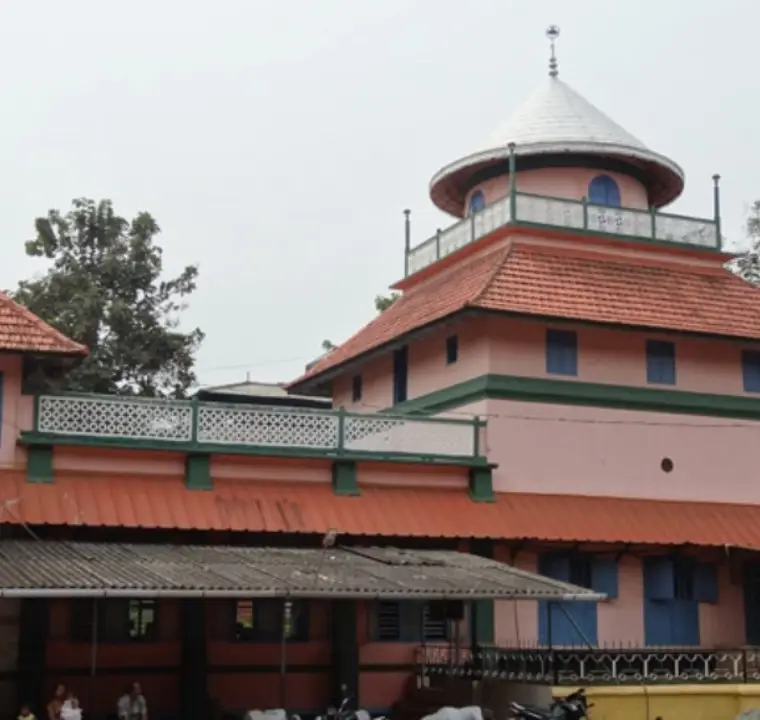
Maqam Juma Masjid stands as a beacon of historical and architectural marvel in Alleppey. Established centuries ago, this mosque has served as a gathering place for the Muslim community, offering a rich tapestry of cultural traditions and religious practices.
Accessibility
These accessibility features make it a convenient location for both local and international tourists, enhancing its role as a cultural hub in the region.
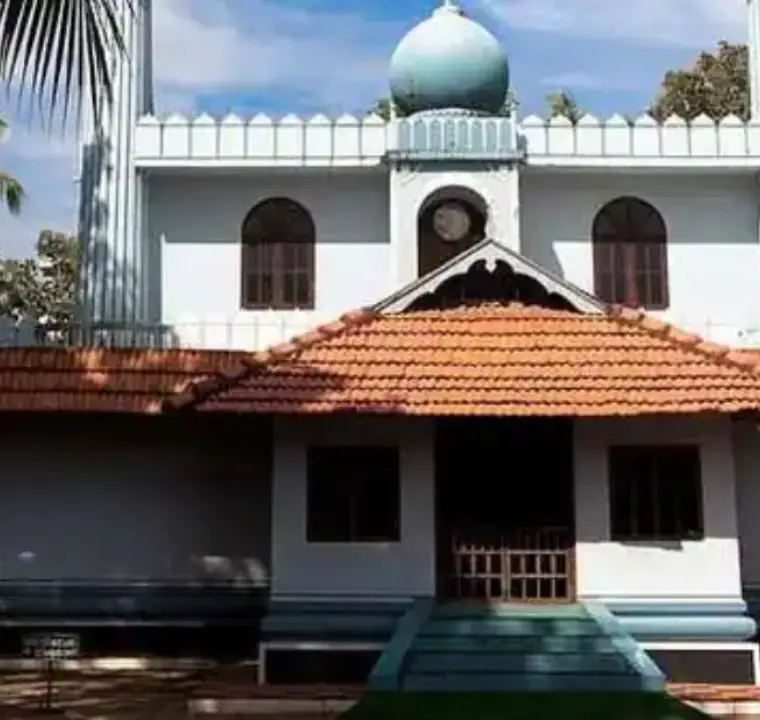
Kizhake Masthan Jumah Masjid is more than just a place of worship; it's a community center that embodies the spirit of Alleppey’s diverse cultural fabric.
Ease of Access:
The mosque's strategic location makes it easily accessible to visitors, playing a vital role in the cultural tourism landscape of Alleppey.
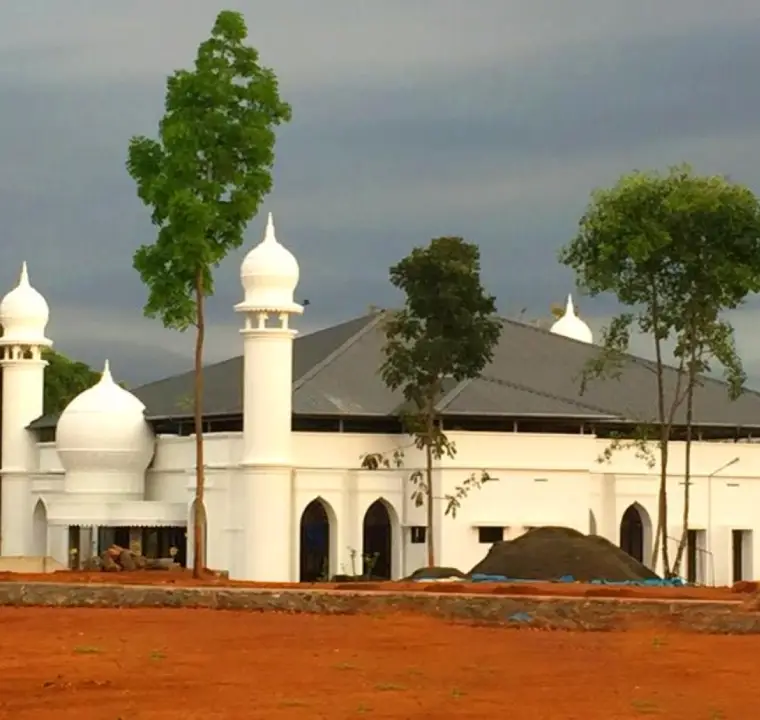
Nestled in the heart of Alleppey, Padinjaare Shafi Jumah Masjid is a cornerstone of spiritual life and community engagement.
Traveler Accessibility:
These mosques collectively enhance the social and cultural landscape of Alleppey, making them essential destinations for anyone interested in the religious and architectural heritage of this unique region. Through their open doors and community-focused events, they help bridge cultural gaps and promote a unified community spirit.
Alleppey, a serene backwater haven in Kerala, is not only renowned for its picturesque landscapes but also as a vibrant epicenter of spiritual and cultural amalgamation, particularly evident through its historic churches. Each church not only serves as a place of worship but also as a cultural cornerstone that enhances the local community’s spiritual life.
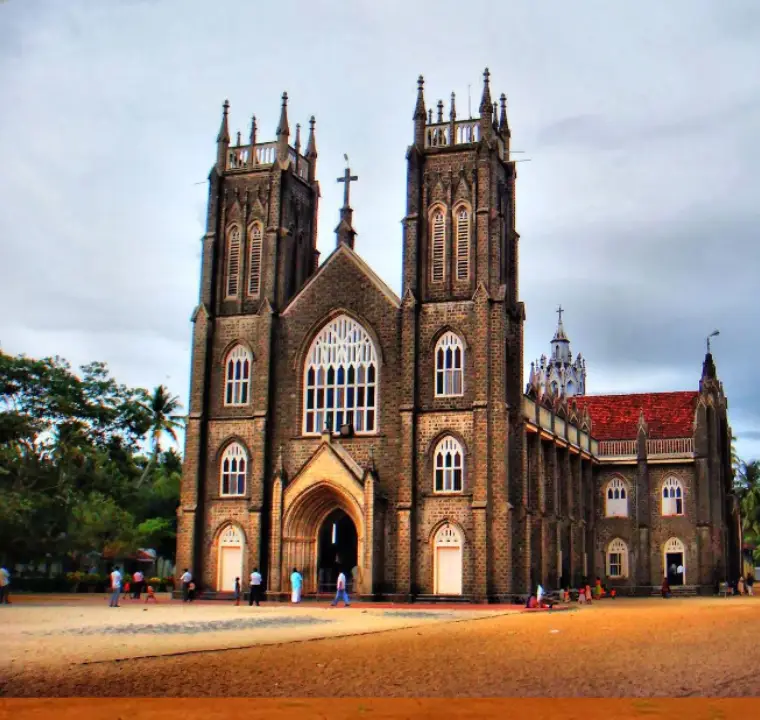
St. Andrews Basilica Church, a magnificent structure with deep historical roots, stands majestically in Arthunkal. Originally built by the Portuguese in the 16th century, it is renowned for its exquisite Gothic architecture and carved wooden altars, which draw not only the faithful but also lovers of history and architecture from around the globe.
This church is central to the spiritual life of the local Christian community, hosting the annual Arthunkal Perunnal festival, which significantly boosts local tourism by attracting thousands of pilgrims and tourists. The festival is a vibrant display of Alleppey’s rich cultural tapestry and adds a dynamic layer to the local economy.
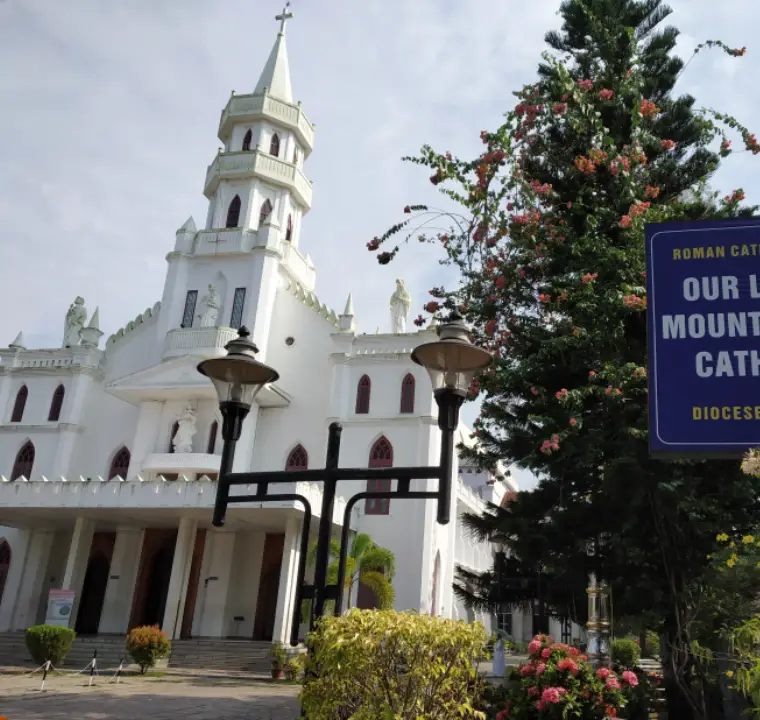
Nestled in the heart of Alappuzha, Our Lady of Mount Carmel Cathedral is not just a religious site but a historical landmark. Its foundations date back to the colonial era, embodying a blend of traditional Kerala and Victorian architectural styles, with unique artifacts such as the antique bell transported from Portugal in the 18th century.
The cathedral plays a pivotal role in the local Christian community’s life, being a hub for many significant religious activities throughout the year. It is particularly noted for its Christmas and Easter celebrations, which see the community coming together in a vibrant showcase of faith and tradition.
Ease of Access
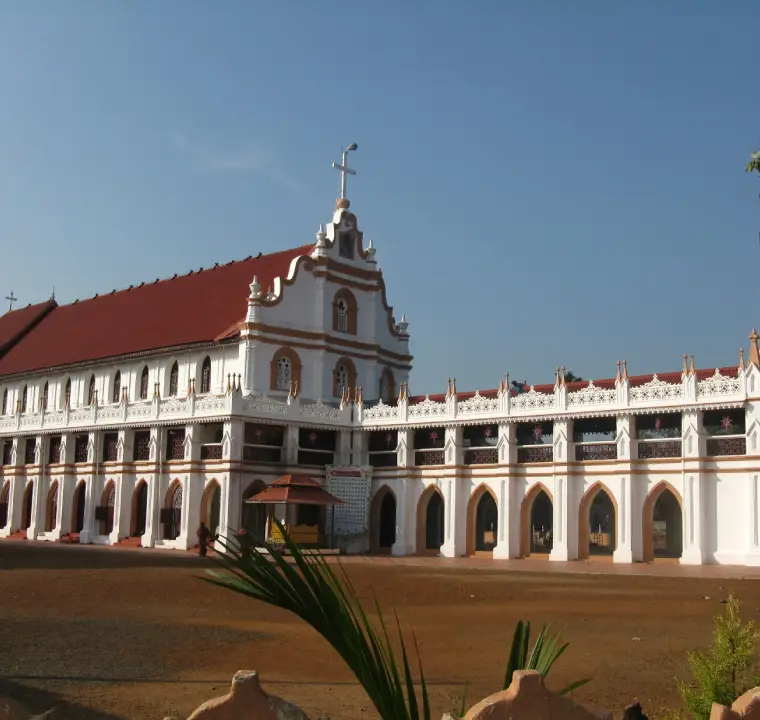
Located on the banks of the Pamba River, St. George Forane Church is an architectural marvel, famous for its blend of Kerala and Persian architectural styles. Established in the early 19th century, it holds a crucial place in the hearts of the local populace and is a focal point for major religious gatherings.
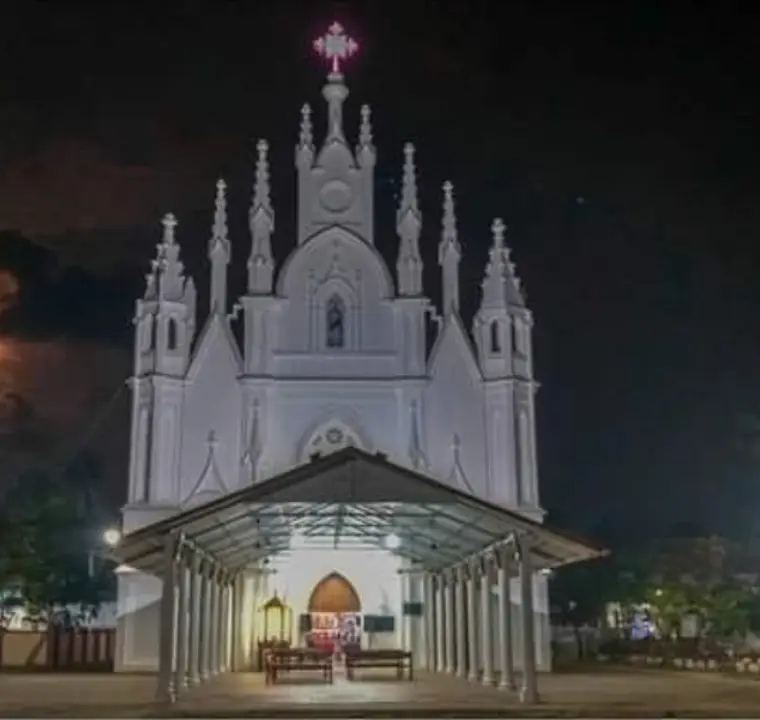
St. Mary’s Forane Church in Thankey is an embodiment of historical richness and architectural beauty. Known for its tranquil setting and striking design, this church is a testament to the centuries-old Christian heritage of Kerala.
It serves not just as a place of worship but as a cultural venue for the local community, hosting events that are integral to the social fabric of Thankey.
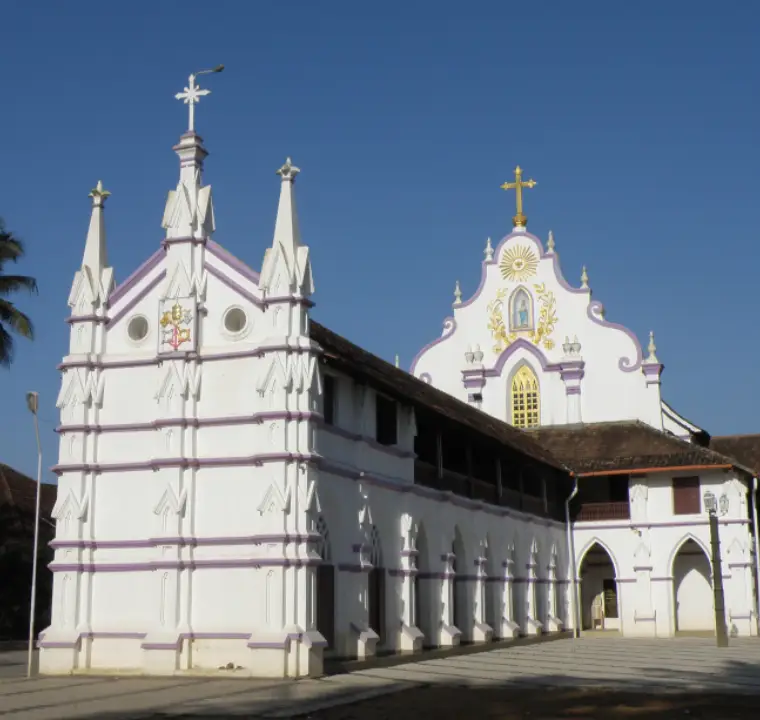
One of the oldest Christian churches in India, St. Mary’s Forane Church, Champakulam is renowned for its ancient artifacts and traditional Kerala architecture. This church is not just a spiritual center but also a beacon of history that attracts scholars and history enthusiasts alike.
Each church in Alleppey is a unique narrative of faith, architecture, and community life, reflecting the harmonious blend of cultural diversity that Kerala is famous for. These sacred grounds invite visitors to explore their majestic facades, delve into their storied pasts, and experience the vibrant community life that revolves around them.
Alleppey, with its rich tapestry of religious diversity, showcases a remarkable blend of architectural styles in its mosques and churches, each reflecting a cultural synthesis that speaks volumes about the historical coexistence and interweaving of different religious traditions.
Churches in Alleppey, like the St. Mary’s Forane Church and St. Andrews Basilica, predominantly display features of classical colonial architecture combined with elements of traditional Kerala artistry. Their towering structures are often complemented by steep roofs, pointed arches, and elaborate altars typical of the Gothic style, which harmoniously blend with the local woodwork and ornamental detailing characteristic of Kerala’s architectural heritage.
Conversely, mosques such as Maqam Juma Masjid and Kizhake Masthan Jumah Masjid highlight the Islamic architectural elements—graceful minarets, domed roofs, and expansive prayer halls adorned with intricate Arabic calligraphy. These features reflect the Islamic tradition while incorporating the local materials and construction techniques that echo the region’s tropical climate and artisanal history.
The architectural convergence in Alleppey’s religious buildings not only serves aesthetic purposes but also symbolizes a deeper cultural integration. For instance, the use of wood and laterite stone in both mosques and churches shows the adaptation to local resources, while decorative motifs may draw from a shared cultural repository, demonstrating the interconnectedness of Alleppey’s diverse communities.
Visiting these spiritual sites is an enriching experience that requires sensitivity and respect for the cultural and religious norms associated with each location. Here are some tips and best practices to ensure a harmonious and respectful visit.
Dress Appropriately: Always opt for modest clothing covering shoulders and knees as a sign of respect in both mosques and churches.
Silence is Golden: Maintain a quiet demeanor within the sacred premises to respect those who are praying or meditating.
Photography Etiquette: Always ask for permission before taking photographs, especially during services or prayers. Some areas may be off-limits to cameras.
Religious Calendars and Festivals: Plan your visit to coincide with non-service times unless attending a specific festival. Noteworthy times include:
Christmas and Easter: Celebrated with grandeur in churches, these festivals offer a glimpse into local customs and rituals.
Ramadan and Eid: Visiting mosques during or after Eid can be particularly rewarding as communities gather and often share their traditions with visitors.
Local Festivals: Events like the feast of St. George in Edathua or the annual celebration at Maqam Juma Masjid provide unique insights into the spiritual and cultural life of Alleppey.
Guided Tours: Consider a guided tour for in-depth knowledge of the historical and architectural significance of each site. Guides can provide contextual background that enriches your understanding and appreciation of these spiritual centers.
By integrating these elements into your visit, not only do you ensure a respectful and enriching experience, but you also contribute to the preservation and appreciation of Alleppey’s unique cultural and religious heritage. This approach aligns with the best practices of travel and tourism, ensuring that the spiritual sanctity and cultural integrity of Alleppey’s religious sites are maintained for future generations.
Alleppey, often lauded for its serene backwaters, also thrives as a vibrant hub where religious sites form the cornerstone of both community life and local tourism. These sacred spaces extend their influence far beyond spiritual gatherings, serving as pivotal venues for social services and cultural events that weave the social fabric of this unique region.
Religious sites in Alleppey are not just places for worship but also centers for community engagement and support. They play a crucial role in offering various social services that benefit the local population.
Educational Programs: Many churches and mosques in Alleppey host educational programs for children and adults, providing learning opportunities that might otherwise be inaccessible to some community members.
Health Services: Free medical camps and health awareness programs are regularly organized by these religious institutions, offering crucial services to underserved populations.
Social Welfare Initiatives: From running food banks to providing shelter for the homeless, the religious sites of Alleppey are often at the forefront of social welfare, ensuring that the community’s most vulnerable members receive necessary aid.
The rich tapestry of cultural practices associated with Alleppey’s religious sites also significantly boosts the local economy through tourism.
Festivals and Celebrations: Religious festivals, such as the feast at St. George Forane Church or the Eid celebrations at Maqam Juma Masjid, draw thousands of visitors annually, spurring local business activities that cater to tourists.
Craft and Artisan Support: Artisans often find employment in maintaining and decorating these sacred sites, preserving traditional crafts that might otherwise fade into obscurity.
Tourism and Local Businesses: The influx of tourists visiting these religious landmarks provides sustained revenue for local businesses, including hotels, restaurants, and markets. This not only supports the Alleppey economy but also promotes cultural exchange and understanding among visitors.
Emphasizing sustainable tourism practices at these religious sites helps ensure that cultural heritage is preserved while fostering economic growth.
Community-Based Tourism: Engaging local communities in tourism activities ensures that the benefits of tourism are equitably shared, promoting sustainable economic development.
Cultural Workshops and Tours: Organized tours and workshops that explain the historical and cultural significance of Alleppey's religious sites educate visitors, enhancing their experience and appreciation of local traditions.
These multifaceted roles of Alleppey's religious sites highlight their importance not just as spiritual havens but also as vital components of the social and economic infrastructure of the community. By supporting these sites, visitors contribute to a legacy of cultural preservation and community service, making their travel experience truly transformative.
By fostering an understanding of the broader roles these religious sites play in community welfare and local economics, visitors can appreciate their visits on a deeper level, ensuring that their presence supports sustainable cultural and economic growth. This approach not only enriches the visitor experience but also aligns with global best practices in responsible and meaningful tourism.
As our journey through the spiritual landscapes of Alleppey draws to a close, we reflect on the enriching experiences that the mosques and churches of this vibrant city offer. Each visit to these sacred places not only deepens one's understanding of spiritual devotion but also opens up a window to the cultural heart of Kerala. The architectural grandeur and historical depth of these sites provide a captivating glimpse into the past and present of religious harmony and community spirit in Alleppey.
A Tapestry of Traditions: Alleppey's religious sites are not just places of worship but are vibrant centers of culture where traditions from various faiths intertwine, offering visitors a rich mosaic of cultural heritage.
Lessons in Unity and Tolerance: The coexistence and mutual respect seen in Alleppey encourage visitors to appreciate and embrace differences, fostering a global spirit of tolerance and understanding.
A Call to Respect: As you step into these sacred grounds, you are invited to respect the sanctity and significance they hold. This respect deepens one’s own spiritual and cultural appreciation, creating lasting bonds of appreciation across diverse backgrounds.
Contribute to Conservation: By visiting these sites, tourists play a role in preserving the unique architectural and cultural heritage of Alleppey, ensuring that these treasures are maintained for future generations.
Promote Local Economies: Engaging with local businesses during your visits helps support the community economically, making your travel experience more impactful and meaningful.
A Parting Thought
The journey through Alleppey’s religious sites is more than a tourist experience; it is a pilgrimage into the heart of Kerala’s diverse cultural ethos. As you leave these gates, carry with you not just memories of awe-inspiring architecture and profound serenity but also a renewed commitment to fostering a world where diversity is celebrated and cherished.
In conclusion, the spiritual journey through Alleppey's mosques and churches offers more than just a peek into the religious life of its people; it is an invitation to connect with and contribute to a community that stands as a beacon of cultural diversity and harmony. Embrace this opportunity to enrich your understanding of the world’s vibrant cultural tapestries, and let the peaceful coexistence in Alleppey inspire you to spread the message of unity and respect wherever you go.